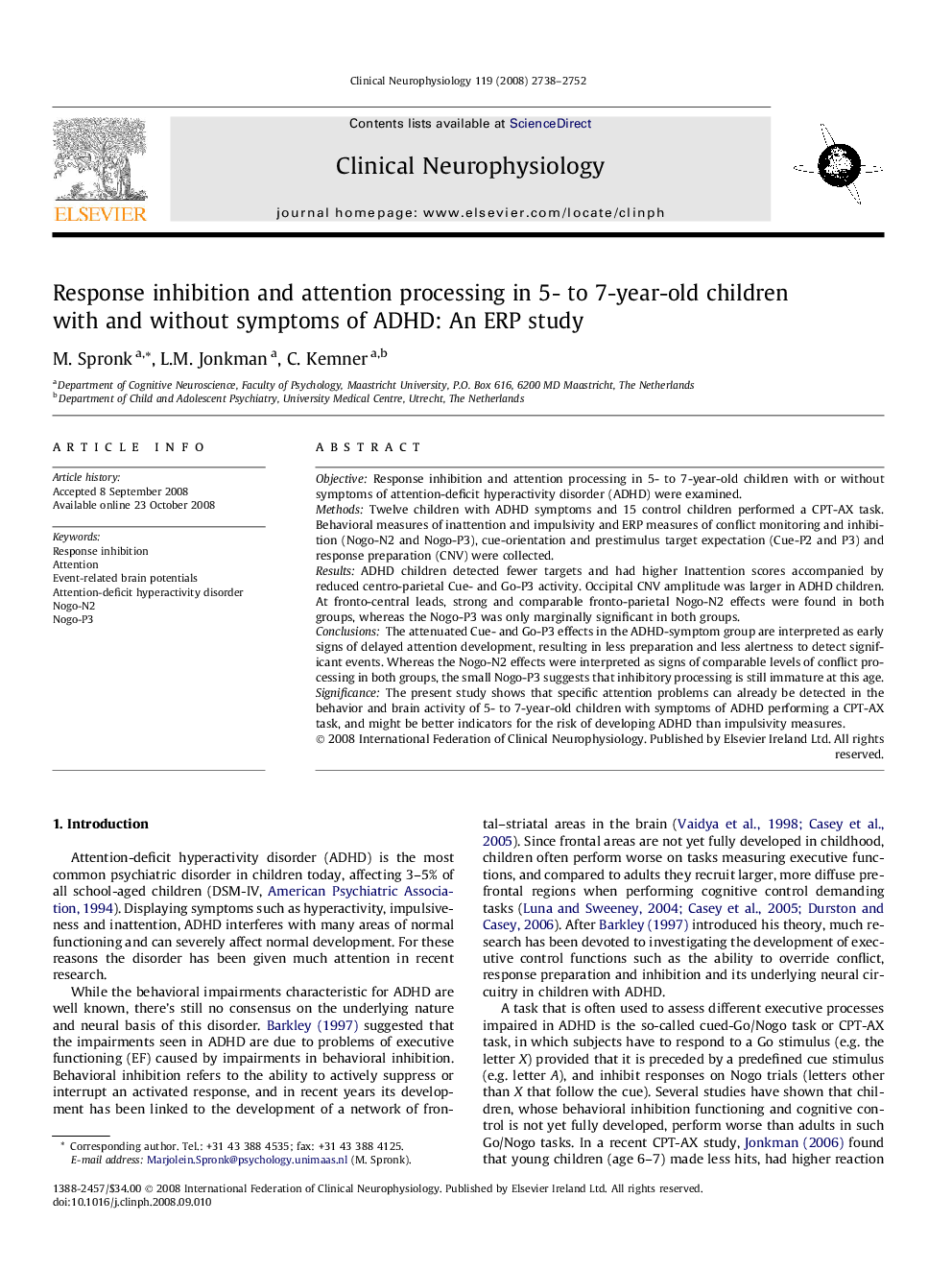| Article ID | Journal | Published Year | Pages | File Type |
|---|---|---|---|---|
| 3047556 | Clinical Neurophysiology | 2008 | 15 Pages |
ObjectiveResponse inhibition and attention processing in 5- to 7-year-old children with or without symptoms of attention-deficit hyperactivity disorder (ADHD) were examined.MethodsTwelve children with ADHD symptoms and 15 control children performed a CPT-AX task. Behavioral measures of inattention and impulsivity and ERP measures of conflict monitoring and inhibition (Nogo-N2 and Nogo-P3), cue-orientation and prestimulus target expectation (Cue-P2 and P3) and response preparation (CNV) were collected.ResultsADHD children detected fewer targets and had higher Inattention scores accompanied by reduced centro-parietal Cue- and Go-P3 activity. Occipital CNV amplitude was larger in ADHD children. At fronto-central leads, strong and comparable fronto-parietal Nogo-N2 effects were found in both groups, whereas the Nogo-P3 was only marginally significant in both groups.ConclusionsThe attenuated Cue- and Go-P3 effects in the ADHD-symptom group are interpreted as early signs of delayed attention development, resulting in less preparation and less alertness to detect significant events. Whereas the Nogo-N2 effects were interpreted as signs of comparable levels of conflict processing in both groups, the small Nogo-P3 suggests that inhibitory processing is still immature at this age.SignificanceThe present study shows that specific attention problems can already be detected in the behavior and brain activity of 5- to 7-year-old children with symptoms of ADHD performing a CPT-AX task, and might be better indicators for the risk of developing ADHD than impulsivity measures.
